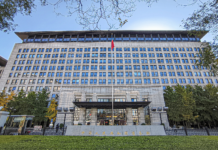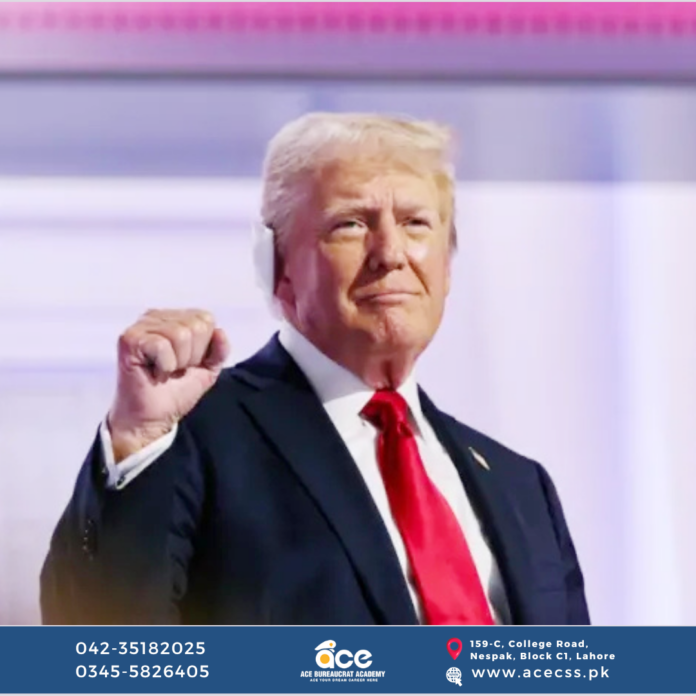The arrival of a second Trump Administration is expected to drastically impact the complex fabric of Sino-US relations. Apparently, Beijing is acutely aware of what that could mean: heightened tensions and renewed confrontations on multiple fronts.
Sino-US relations, already frayed, may face an era marked by intensified scrutiny, as Trump’s rhetoric and policies often frame China as a strategic adversary rather than a partner in global stability. This trajectory is not without grave implications. The stakes here are monumental, touching every corner of the global economy and the daily lives of billions.
Good relations between the USA and China mean shared prosperity, peace, and predictability. Yet the current bipartisan unity in Washington- to approach China with a hawkish angle- suggests otherwise. This unified American approach, rare in such polarized times, reflects the deepening shift in US policy, a signal to Beijing that the Trump Administration may intensify this hardened stance, complicating any pathway toward constructive engagement.
While US and Chinese interests diverge on some fronts, these differences need not preclude a workable arrangement that serves both sides. Beijing has consistently conveyed that it has no intention of displacing Washington’s role on the global stage; rather, it seeks a “peaceful coexistence” that acknowledges shared interests. After years of volatility, a recalibration that emphasizes coexistence could move the US-China relationship forward in a constructive direction – one that benefits not just both nations, but the global community.
During the recent presidential campaign, there was an intense rivalry between Democrats and Republicans to be seen as “tough” on China. For many politicians on both sides of the divide, a “soft” stance on China meant nearly a career-ending label.
China was often mentioned in the recent bruising election season. For China, this campaign spotlight hints at potential for strategic adjustments in US policy, despite the USA’s obvious trend toward toughness. Trump’s stance on China has been strikingly consistent in its bluntness: he casts China as the villain behind America’s economic woes, blaming US “weakness” for a perceived loss of manufacturing and blue-collar livelihoods.
In a renewed Trump era, Beijing could expect a focus on trade balances, economic rivalry, and security cooperation- areas where Trump believes his brand of deal-making shines. He’d likely avoid contentious topics like human rights, which don’t fit his transactional priorities. Instead, it’s a style of diplomacy laser-focused on interests that directly impact the USA. From China’s perspective, this values-free pragmatism may offer clarity but little in the way of partnership or nuanced understanding – another reminder of the narrow lens through which he views the world.
Following Trump’s return to the world stage, President Xi Jinping extended a measured yet hopeful gesture, urging for a revival of diplomacy that recognizes the delicate but essential link between the USA and China. In his congratulatory message, Xi struck a careful balance, acknowledging the stakes of Sino-US relations and advocating for a practical collaboration. “History has shown,” he remarked, “that a stable, sustainable China-US relationship aligns not only with our mutual interests but with those of the global community.”
Xi’s words reflected Beijing’s ongoing drive to rebuild the trade bridge with Washington through a framework of mutual benefit – a win-win approach that has served as the foundation of past U.S.-China economic ties. Amid heightened tensions, particularly with the recent US and European tariff hikes on Chinese electric vehicles, Xi’s message was clear: China remains open to dialogue and cooperation, even as Washington adopts a more protectionist stance. By extending this olive branch, Xi signals a willingness to work with the Trump Administration, to find common ground, and to ease the strains of an escalating trade war—a nod to the potential for a pragmatic coexistence despite the challenges ahead.
In his message to Donald Trump, Xi offered a pragmatic framework to steer Sino-US relations forward, proposing three guiding principles grounded in the notion that cooperation yields far greater benefits than confrontation for the world’s two largest economies. Xi’s proposal underscores the need for understanding each other’s strategic motivations, addressing sensitive issues, such as Taiwan and the South China Sea. responsibly, and leveraging shared strengths to drive economic growth. With US-China relations at a historic low, Xi’s approach signals a pivot from the “show of strength” rhetoric that has dominated recent years, urging Washington to prioritize common interests over zero-sum strategies.
Beijing appears committed to dialogue, viewing it as essential for sustaining any productive relationship. Notably, bilateral working groups between China and the USA have continued, a testament to the resilience of diplomatic channels even amid strained ties. Through consistent, open communication, Xi suggests, both nations could recognize that their roles as global stakeholders demand collaboration on issues such as climate change, technological innovation, and global trade- areas where partnership could yield mutual gains rather than exacerbating rivalry.
However, as Xi’s outreach underscores, the future of this relationship rests heavily on how Trump, a leader with a history of unpredictable foreign policy moves, will handle this delicate balancing act. The global dynamics have shifted significantly since his first presidency, and his approach this time could either alleviate or intensify global tensions. If Trump can embrace Xi’s call for mutual respect and strategic cooperation, the outcome could foster not just bilateral stability but a positive ripple effect on global economic and political landscapes.
The opportunity for progress is there, but it hinges on a recalibration toward a partnership that transcends narrow national interests for the broader, shared goal of global stability.
Confrontation, as recent years have shown, yields no winners—only mutual setbacks. The U.S.-China trade war, launched in 2018, inflicted palpable damage on the American economy without truly addressing its underlying concerns. Instead of yielding breakthroughs, tariffs have strained industries on both sides, denoting the limitations of a high-tariff, protectionist approach.
From Beijing’s perspective, the way forward for the new Administration is a pragmatic pivot toward expanded trade ties. If the USA genuinely seeks economic revitalization, it would be wiser to pursue cooperation over zero-sum tactics that deepen divisions. President Trump, a self-described pragmatist, might consider that mutual economic growth and stability are more feasible than continued escalation.
While US and Chinese interests diverge on some fronts, these differences need not preclude a workable arrangement that serves both sides. Beijing has consistently conveyed that it has no intention of displacing Washington’s role on the global stage; rather, it seeks a “peaceful coexistence” that acknowledges shared interests. After years of volatility, a recalibration that emphasizes coexistence could move the US-China relationship forward in a constructive direction – one that benefits not just both nations, but the global community.






















